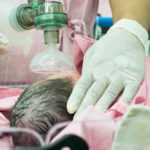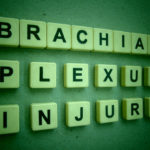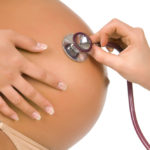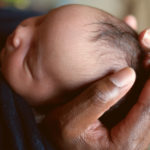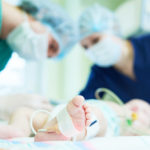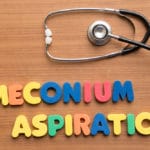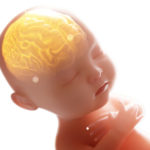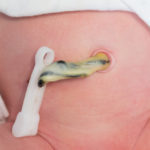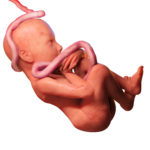
Kim Langdon, M.D.
OB/GYN
Highlights
- Board certified OB/GYN
- 19 years of clinical experience
- Graduate of The Ohio State University, College of Medicine
Education
Dr. Langdon is a retired, board-certified OB/GYN. Raised in Ohio, she attended undergraduate school at The University of Cincinnati before graduating from Ohio State University College of Medicine. She earned honors in many rotations. She stayed at Ohio State to complete her residency program, scoring in the 98th percentile on the C.R.E.O.G. National Proficiency Test. Her activities and societies included AMA, OSMA and ACOG.
Experience
During her career, Dr. Langdon delivered over 2,000 babies and specialized in minimally invasive procedures, menopause, endometriosis, menstrual disorders and polycystic ovarian syndrome. After clinical practice, she founded a medical device company, Physician Integrative Laboratories, where she invented six patented devices for both life-threatening and non-life-threatening conditions. She is a prolific medical writer and featured healthcare expert.
Pages Reviewed
Anoxia and Hypoxia at Birth
If your infant suffers oxygen deprivation during birth, he or she may have an anoxic or hypoxic brain injury.
Birth Asphyxia
Birth asphyxia can cause your child to lose oxygen, resulting in a variety of birth injuries.
Birth Trauma
Birth trauma can occur due to complicated deliveries or the negligence of healthcare providers.
Brachial Plexus Injury
Brachial plexus injuries are often the result of birth trauma. They can impact your child’s sensation and movement in the affect arm.
Bruising and Petechiae
Bruising and petechiae may be a sign of a more serious injury or illness.
C-Section Injuries
Surgical procedures always have risks, including C-sections. Find out more about C-section injuries.
Caput Succedaneum
Caput succedaneum occurs when a baby’s scalp is swollen after delivery. Learn more about possible risks and the prognosis for this birth injury.
Cerebral Palsy from Birth Injury
Cerebral palsy is a brain disorder that causes motor deficiencies. Brain damage before, during or after birth can cause cerebral palsy.
Erb’s Palsy
Erb’s palsy is a nerve injury that affects movement in the shoulder, arm and hand. This injury is often caused by birth trauma.
Failure to Diagnose Gestational Diabetes
Gestational diabetes is common during pregnancy, but a doctor’s failure to diagnose it could result in health problems for mother and baby.
Fetal Macrosomia
Fetal macrosomia occurs when the infant is unusually large for his or her gestational age. It can cause birth injuries and complications.
Forceps Delivery Injury
Forceps are a tool commonly used to assist in difficult deliveries. Improper use, however, can cause birth injuries.
HIE: Hypoxic Ischemic Encephalopathy
Hypoxic ischemic encephalopathy (HIE) is a type of brain injury that affects newborns. It can lead to serious and even permanent brain damage.
Infant Brain Ischemia
Infant brain ischemia is the result of a lack of blood flow to the brain during labor and delivery.
Infant Cephalohematoma
Trauma during labor and delivery can cause cephalohematoma, or damage to blood vessels on the skull.
Infant Resuscitation Errors
Resuscitation errors are a type of medical negligence that can lead to serious complications or birth injuries.
Intrauterine Growth Restriction (IUGR)
Intrauterine growth restriction, or IUGR, is a condition that causes infants to weigh significantly less than is average for their gestational age.
Maternal Infections
A variety of maternal infections can be dangerous to infants during pregnancy and delivery, and beyond.
Meconium Aspiration Syndrome
Meconium aspiration syndrome occurs when an infant breathes in meconium and amniotic fluid before or during birth.
Neonatal Sepsis
Neonatal sepsis is a dangerous, sometimes life-threatening, condition that affects infants shortly after birth.
Neonatal Therapeutic Hypothermia
Therapeutic hypothermia is a treatment option for infant brain damage that helps stop the spread or progression of brain damage.
Perinatal Hypoxia
Perinatal hypoxia can occur for many reasons, and can lead to serious birth injuries.
Placenta Previa
Placenta previa is a complication of pregnancy where the placenta covers some or all of the cervix. Timely diagnosis and treatment are important.
Placental Abruption
Placental abruption is a rare complication of pregnancy that can be devastating to both mother and infant.
Placental Insufficiency
Placental insufficiency is a rare but dangerous complication of pregnancy. Timely diagnosis and treatment is imperative.
Post-term Pregnancy Causes and Risks
Post-term pregnancy is a pregnancy that lasts longer than 42 weeks. That is two weeks past the normal 40-week gestation period. Most women deliver their babies between 37 and 40 weeks, which is considered safe and […]
Preeclampsia
Preeclampsia is a common complication of pregnancy. It can lead to serious medical problems for mother and child, and increases the risk of birth injuries.
Premature Cord Clamping
Clamping an infant’s umbilical cord too soon could put them at risk for birth injuries or other health issues.
Preterm Labor and Birth
Preterm labor and birth can lead to a host of medical conditions, complications and birth injuries.
Surgery For Birth Injuries
If your child has a birth injury, your doctor may recommend surgery to relieve symptoms and promote healing.
Umbilical Cord Compression
Umbilical cord compression can occur for many reasons, and can be dangerous to the infant.
Vacuum Extraction Injury
A vacuum extraction injury can lead to serious medical conditions and consequences for the infant.
Wrongful Pregnancy
Wrongful pregnancy is a controversial type of birth injury often resulting from a botched sterilization procedure.
